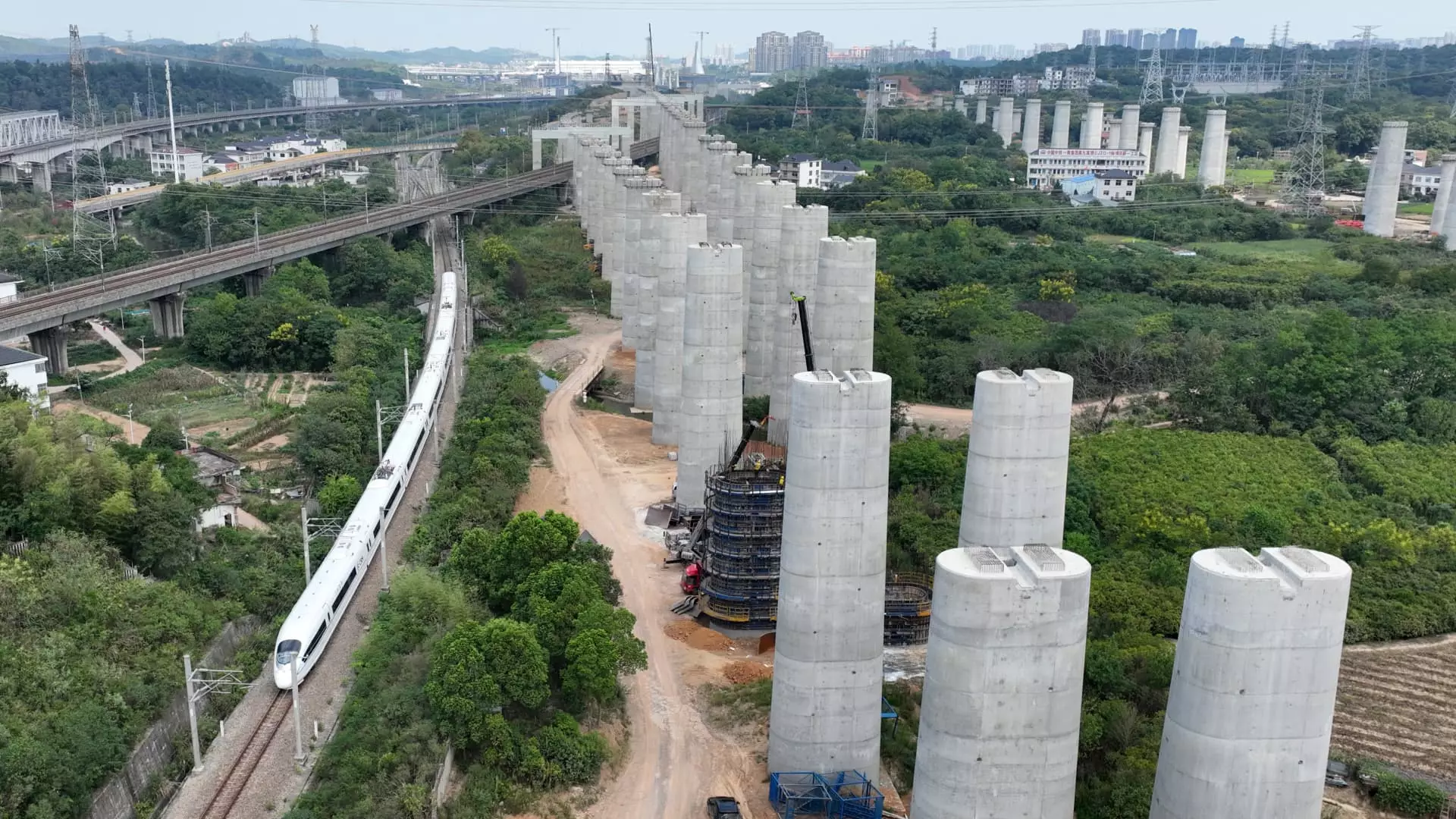China’s economy is currently grappling with a significant consumption slowdown, primarily influenced by a deepening crisis in the real estate sector and its consequential impacts on local government finances. Over the past two decades, a substantial portion of Chinese household wealth has been tied up in real estate investments, creating an economic structure that heavily relies on property values and real estate transactions as engines for growth. However, the tectonic shift initiated in 2020 by the Chinese government—aimed at curbing the inflated reliance of property developers on debt—has resulted in falling property values and a stark decrease in land purchases. This decline has placed immense pressure on local government revenues, particularly at district and county levels, resulting in a precarious economic climate.
Analysts at S&P Global Ratings have projected a prolonged recovery for local government finances, predicting a timeline of three to five years for stabilization. Wenyin Huang, an S&P director, highlighted the persistent challenges that macroeconomic headwinds pose on local revenue generation capabilities. The interconnectedness of local governments and real estate has meant that the drop in land sales revenue is directly impacting tax revenues, further exacerbating fiscal difficulties. Additionally, tax cuts implemented since 2018 have reduced average operating revenue by approximately 10% across the nation, pulling funds away from essential services and leaving local authorities scrambling for alternative revenue sources.
Struggling businesses are now caught in a vice; financial recovery efforts by local governments translate to increased tax burdens, thereby stifling hiring processes and salary increases. The result is a pervasive uncertainty among consumers regarding their financial futures, which further suppresses spending and economic growth. Historical tax records have resurfaced additional challenges, with several companies receiving notices for back taxes dating as far back as 1994. The impacts are widespread and devastating, as companies, including those in economically prosperous provinces like Zhejiang, are now forced to repay substantial sums that deepen their financial woes.
Rising Tensions and Public Sentiment
The resurgence of tax collection efforts has ignited an uproar on social media, reflecting increased public unease regarding the economic climate. As the CKGSB Business Conditions Index indicates fluctuations around the 50-point mark—signifying stagnation—the need for urgent remedial measures has become all the more pressing. Retail sectors, having recorded sluggish growth, illustrate the chronic nature of this economic malaise, demonstrating that stimulus measures over the last few years have largely failed to spark the needed consumer momentum.
Moreover, the Chinese taxation administration’s effort to clarify the issue only added layers of complexity to the situation, as officials characterized the notifications for retroactive tax payments as “routine measures.” This statement, however, has done little to assuage concerns over the apparent desperation of local governments to find new revenue streams.
Government Spending and Growth Trends
The crux of the problem lies in the governmental spending patterns and the perceived necessity for growth. As Laura Li, of S&P Global Ratings, elucidates, public expenditures are mainly focused on unavoidable sectors such as education and civil service salaries—areas that cannot be curtailed easily. There is a palpable tension between stimulating growth through investment versus transitioning towards a consumption-driven economy. Compounding this challenge is the persistent rise in debt levels; as authorities grapple with an existing debt-to-GDP ratio that has surged to over 310%, there looms a risk that rigid adherence to investment-driven growth could trigger a repeat of the debt spiral seen in previous decades.
A significant component complicating this situation is the existence of Local Government Financing Vehicles (LGFVs), which have incurred massive debts to finance infrastructure projects with minimal rate of return. This conundrum poses a “grey rhino” risk—highly probable yet largely ignored by authorities. The problem is magnified as financial institutions exhibit greater exposure to LGFV debts compared to those linked to real estate developers. Expert commentary suggests that the government is currently navigating a precarious course, striving to maintain stability amid growing liquidity challenges while simultaneously looking to address these entrenched fiscal issues.
China’s economic landscape is fraught with imminent risks stemming from its real estate slump and the intricate relationship between local governance and fiscal management. As local governments scramble to stabilize their finances, the implications for businesses and consumers create a cycle of uncertainty that clouds the economic horizon. To break this cycle, a pivot towards sustainable consumption-driven growth will be essential. Without significant intervention, the foundations of China’s economic model may remain imperiled, with rising debt levels threatening to overshadow any potential recovery efforts in the years ahead.

